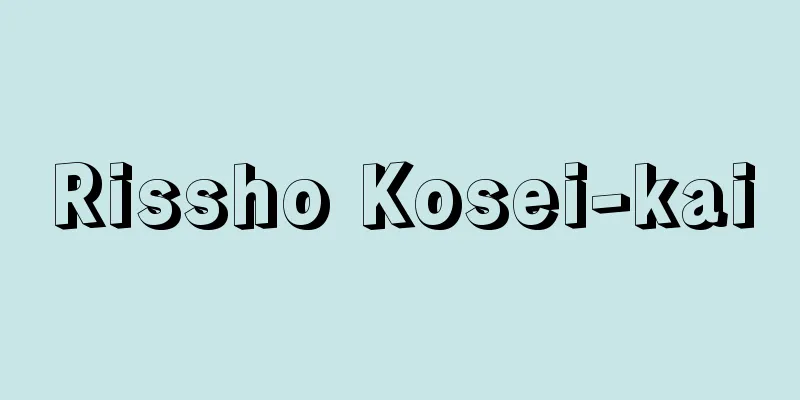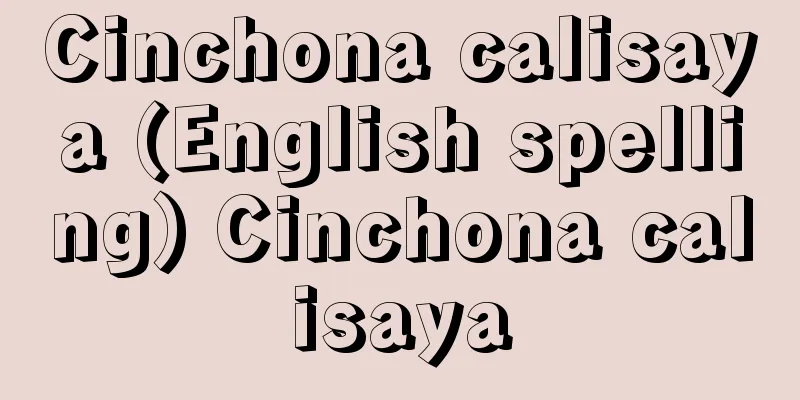Rissho Kosei-kai

|
This is a lay Buddhist sect that worships Shakyamuni Buddha as its principal image and the Lotus Sutra as its scripture of reliance. It was founded in Suginami Ward, Tokyo on March 5, 1938 (Showa 13) by Niwano Nikkyo (first chairman) and Naganuma Myoko (first vice chairman), both of whom had left Reiyukai. The headquarters dojo was completed in 1942. Kosei-kai started out with fewer than 30 believers, but after World War II its reach grew significantly, reaching 18,000 households by 1948 (Showa 23). From 1949 to 1955, the new headquarters dojo, cemeteries, hospitals, libraries, schools, and other facilities were built one after another. In 1956, the Yomiuri Shimbun criticized Kosei-kai (the Yomiuri Incident), and for the first time since its founding, the number of believers dropped from 330,000 to 300,000. In 1958, the organization declared to the outside world that the principal image was the Great Gracious Teacher Shakyamuni (Kuonjitsujodaionkyoshushakamuniseson) (the Manifestation of Truth). In 1960, the organization changed its missionary organization from one based on the lineage of guidance to one based on administrative divisions, resulting in 10 parishes and 104 branches. In 1969, the organization advocated the "Bright Society Creation Movement" and played a leading role in the World Religious Peace Conference, which began preparations in the same year. Meanwhile, the current headquarters cathedral (1964), the Fumonkan (1970), and the Horinkaku (1978) were completed, and the Rissho Kosei-kai Peace Development Fund and the Niwano Peace Foundation were established. In 1991 (Heisei 3), Niwano Nichiko handed over the position of chairman to his eldest son, Niwano Nichiko (1938- ), and became the founder. In 1994, Nichiko's eldest daughter, Kosho (1968- ), was named the third successor to the position of chairman. In 1999, Nichiko passed away, and the Ichijo Pagoda (a shrine for interment) was built in the Horinkaku Gardens the following October, 2000. Rissho Kosei-kai's religious activities are based on the teaching that the true meaning of religion is one, and consist of training in the Dharma seat to hone oneself with the Dharma at the core, and practical actions for world peace. Specific peace activities include the "UNICEF Fund Raising Campaign" (1979-), support for the "World Disarmament Campaign" (1983-), the establishment of the "Niwano Peace Prize" (1983-), support for the "Blanket to Africa Campaign" (1984-), and the dispatch of the "Asian Youth Peace Mission" (1986-). The headquarters is in Wada, Suginami-ku, Tokyo. There are 238 churches, 380 missionary stations, 80,614 teachers, and 3,089,374 believers (Religious Yearbook, 2014 edition). [Hiroyuki Ohshima] "My Resume" by Niwano Nikko (1982, Nihon Keizai Shimbun)" ▽ "Selected Sermons by Niwano Nikko, 8 volumes (1978-84, Kosei Publishing)" ▽ "History of Rissho Kosei Kai, compiled by the Organization History Compilation Committee, 7 volumes (1983-85, Kosei Publishing)" [References] | | |Source: Shogakukan Encyclopedia Nipponica About Encyclopedia Nipponica Information | Legend |
|
釈迦牟尼仏(しゃかむにぶつ)を本尊とし、『妙法蓮華経(みょうほうれんげきょう)』を所依(しょえ)の経典とする在家仏教教団。1938年(昭和13)3月5日、ともに霊友会を脱会した庭野日敬(にっきょう)(初代会長)と長沼妙佼(みょうこう)(初代副会長)を創始者として、東京都杉並区で発足した。1942年、本部道場落成。当初、30人に満たない信者で出発した佼成会は、第二次世界大戦後教勢が著しく伸展し、1948年(昭和23)には1万8000世帯となり、翌1949年から1955年まで、新本部道場、霊園、病院、図書館、学園等施設の建設が相次いだ。1956年、『読売新聞』による佼成会批判(読売事件)が起こり、創立以来初めて信者数が33万世帯より30万世帯に減少した。1958年、久遠実成大恩教主釈迦牟尼世尊(くおんじつじょうだいおんきょうしゅしゃかむにせそん)が本尊であることを中外に宣言(真実顕現(けんげん))。1960年、これまでの導きの系統による布教組織を行政区画に従う組織に改変、10教区、104支部となる。1969年「明るい社会づくり運動」を提唱し、同年より準備活動に入った世界宗教者平和会議の推進役を担う。一方、現本部大聖堂(1964)、普門館(1970)、法輪閣(1978)が落成、立正佼成会平和開発基金、庭野平和財団が設立された。 1991年(平成3)、庭野日敬は会長位を長男庭野日鑛(にちこう)(1938― )に委譲(法燈継承)し、開祖となった。1994年、日鑛の長女光祥(1968― )が3代会長位継承者に指名された。1999年、日敬が死去し、翌2000年10月法輪閣庭園に一乗宝塔(納骨霊堂)が建立された。立正佼成会の信仰活動は、宗教の本義は一つとの教えを核とし、法を中心に磨き合う法座修行と世界平和への実践行にある。具体的な平和活動の展開としては、「ユニセフ募金運動」(1979~ )、「世界軍縮キャンペーン」の支援(1983~ )、「庭野平和賞」の創設(1983~ )、「アフリカへ毛布を送る運動」の支援(1984~ )、「アジア青年平和使節団」の派遣(1986~ )などがある。本部は東京都杉並区和田。教会数238、布教所数380、教師数8万0614、信者数308万9374(『宗教年鑑』平成26年版)。 [大島宏之] 『庭野日敬著『私の履歴書』(1982・日本経済新聞社)』▽『『庭野日敬法話選集』全8巻(1978~84・佼成出版社)』▽『教団史編纂委員会編『立正佼成会史』全7巻(1983~85・佼成出版社)』 [参照項目] | | |出典 小学館 日本大百科全書(ニッポニカ)日本大百科全書(ニッポニカ)について 情報 | 凡例 |
>>: Rissho Ankokuron - Rissho Ankokuron
Recommend
Tango - tango (English spelling) tango Spanish
A type of Latin American dance music. There are v...
Gilbreth, LEM (English spelling) GilbrethLEM
…His basic ideas were summarized in The Principle...
Eifu Tachi - Eifu Tachi
… On the other hand, as the samurai rose to power...
Chinese sturgeon - Chinese sturgeon
…The eggs hatch in about a week, and the young fi...
Mt. Kasegi
〘noun〙 A forest that is used jointly by the reside...
Feldmannia
…It is disliked as a harmful algae in seaweed far...
gyrfalcon
…Outside of Japan, it is widely distributed from ...
Herbeck, J.
…Schubert began work on his Symphony No. 7 in B m...
Selection of Tang Poetry - Toushisen
A collection of Tang poetry compiled in the Ming ...
Miller, WH
…On the other hand, the concept of crystal lattic...
Grand naturalization
…There is a system in place where the Minister of...
Weiterverweisung
...In the above example, the address of the decea...
γ-field - gamma field
A large-scale outdoor research facility that irrad...
Gieseking
German pianist. One of the most representative pia...
Kaluza, TFE (English name) KaluzaTFE
...In other words, although mathematically comple...









